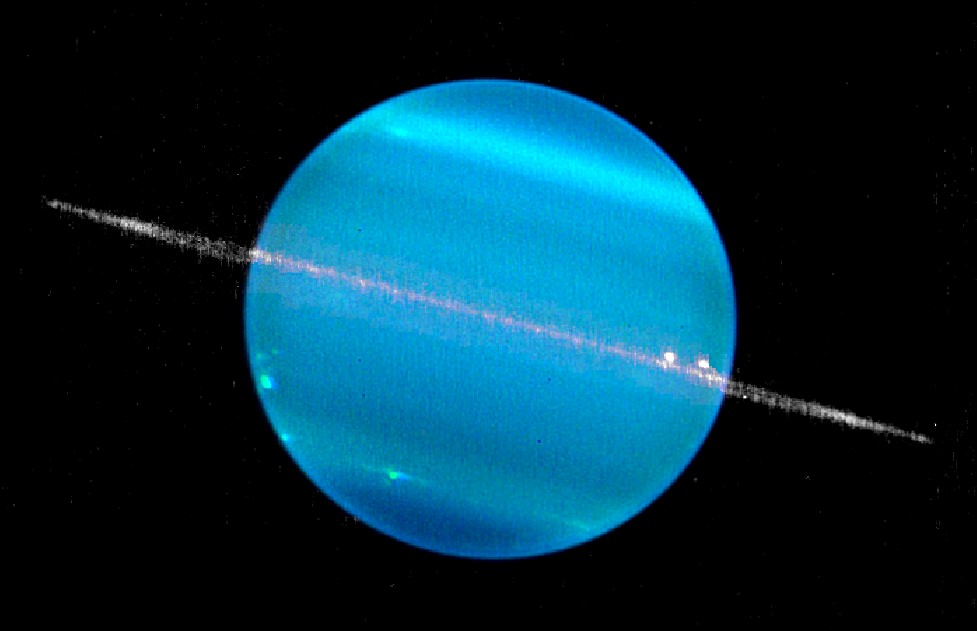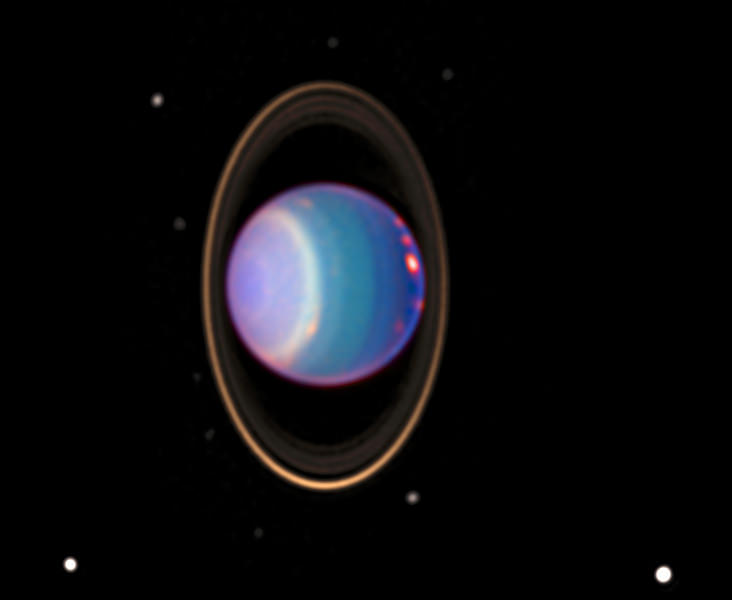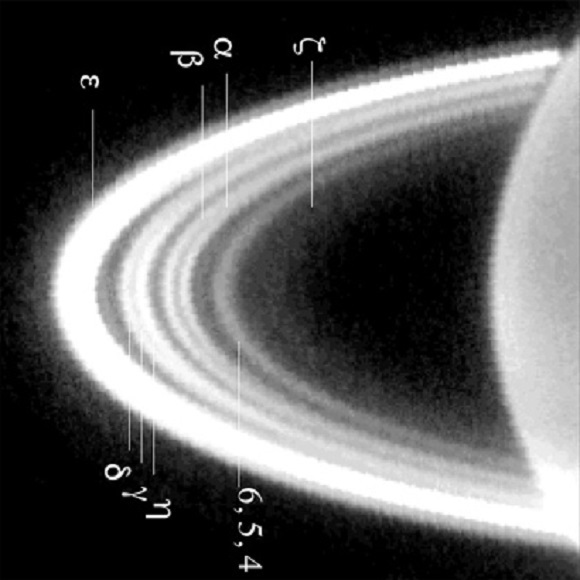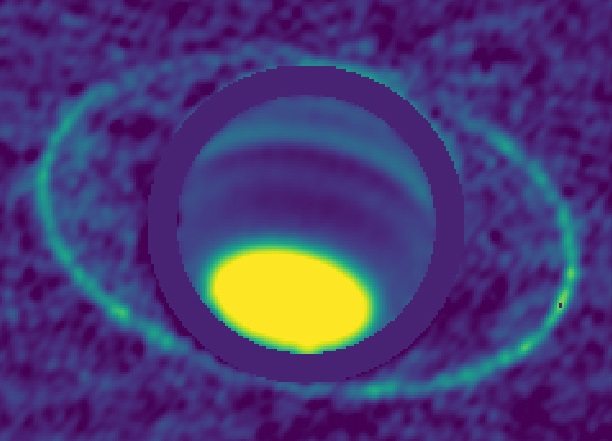During the late 1970s, scientists made a rather interesting discovery about the gas giants of the Solar System. Thanks to ongoing observations using improved optics, it was revealed that gas giants like Uranus – and not just Saturn – have ring systems about them. The main difference is, these ring systems are not easily visible from a distance using conventional optics and require exceptional timing to see light being reflected off of them.
Another way to study them is to observe their planet in infrared or radio wavelengths. This was recently demonstrated by a team of astronomers who conducted observations of Uranus using the Atacama Large Millimeter/submillimeter Array (ALMA) and the Very Large Telescope (VLT). In addition to obtaining temperature readings from the rings, they confirmed what many scientists have suspected about them for some time.
The study which describes their findings, “Thermal Emissions from the Uranian Ring System“, recently appeared in The Astronomical Journal. The study team consisted of Edward Molter and Imke de Pater from the University of California, Berkeley (who conducted the ALMA observations) while Michael Roman and Leigh Fletcher (from the University of Leicester) conducted the VLT observations.

While William Herschel described seeing a possible ring around Uranus as early as 1789, Uranus’ rings were not definitively discovered until 1977 by a team using NASA’s Kuiper Airborne Observatory. These observations confirmed the existence of four rings, while an additional six were discovered shortly thereafter. When Voyager 2 passed Uranus in 1986, it obtained the first direct images of the rings and detected an eleventh.
Since then, the total number of rings observed has climbed to thirteen. In addition, observations by the Hubble Space Telescope and Keck Observatory confirmed the existence of two previously-unknown rings that orbit Uranus at a much greater distance that are blue and red in color. This indicates that these “outer rings” have a different composition than the inner rings (which are grey).
In spite of these discoveries, a detailed understanding of Uranus’ rings (including the size and distribution of its particles) has remained poorly constrained until now. Hence why the team came together to
What this combined data revealed was that Uranus’ system has a temperature of just 77 K (-196 °C; -320 °F). The observations also confirmed that Uranus’s brightest and densest ring (the Epsilon ring) differs from the other known ring systems in our solar system. As Imke de Pater, a UC Berkeley professor of astronomy, explained in an interview with Berkeley News:
“Saturn’s mainly icy rings are broad, bright and have a range of particle sizes, from micron-sized dust in the innermost D ring, to tens of meters in size in the main rings. The small end is missing in the main rings of Uranus; the brightest ring, epsilon, is composed of golf ball-sized and larger rocks.”

This sets Uranus’ Epsilon ring apart from the rings of Saturn, which are composed of water ice and trace amounts of dust that range in size from micrometers to meters. It is also at odds with the rings of Jupiter, which contain mostly small, micron-sized particles and Neptune’s rings that are mostly dust. Even Uranus’ main rings also have broad sheets of dust between them.
Knowing the composition and distribution of matter in these ring systems is important to
“We already know that the epsilon ring is a bit weird, because we don’t see the smaller stuff. Something has been sweeping the smaller stuff out, or it’s all glomming together. We just don’t know. This is a step toward understanding their composition and whether all of the rings came from the same source material, or are different for each ring.
“The rings of Uranus are compositionally different from Saturn’s main ring, in the sense that in optical and infrared, the albedo is much lower: they are really dark, like charcoal. They are also extremely narrow compared to the rings of Saturn. The widest, the epsilon ring, varies from 20 to 100 kilometers wide, whereas Saturn’s are 100’s or tens of thousands of kilometers wide.”

This lack of dust-sized particles was first noticed when the Voyager 2 space probe flew by the planet in 1986, but the spacecraft was unable to measure the temperature of the rings at the time. However, both the VLT and ALMA observations were designed (in part) to be able to explore the temperature structure of Uranus’ atmosphere.
Interestingly enough, this is precisely what the study team was attempting to do at the time. But when they reduced the data, they noticed something even more impressive: Uranus’ rings shining brightly at them. “It’s cool that we can even do this with the instruments we have,” said Molter. “I was just trying to image the planet as best I could and I saw the rings. It was amazing.”
The results of this study are especially exciting when you consider that next-generation telescopes that will be taking to space in the coming years (like the James Webb Space Telescope) will be able to view the rings with even greater precision and sensitivity. These observations will allow astronomers to place vastly improved spectroscopic constraints on Uranus’ system of rings, and possibly those of the other gas giants.
Further Reading: Berkeley News

